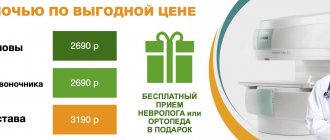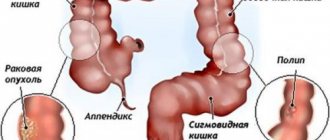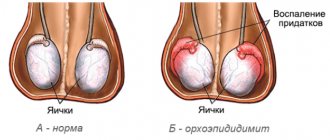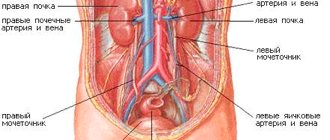Urethritis is a disease of the genitourinary system that is diagnosed in both men and women. The disease is more often found in males due to the greater severity of symptoms. But the incidence rate is equally high among both sexes.
- What is urethritis?
- Causes of urethritis in women
- Symptoms
- Urogenital tuberculosis
- Diagnostics
- Complications
- Treatment of acute urethritis
- Diet for urethritis in women
- General recommendations for recovery
- Treatment of chronic urethritis
What is urethritis?
Symptoms of urethritis in women can be very mild, and a woman may not pay attention to them. Also, the disease often occurs in a latent form: when there is an infection in the body, but there are no signs of illness. Then the person does not even suspect about the pathology and does not seek medical help. In such cases, the prognosis is unfavorable, because lack of treatment leads to the process becoming chronic. And, it is logical that it carries certain complications and difficult therapy in the future.
Urethritis is a disease in which the walls of the urethra (urethra) become inflamed. The reasons may vary. Urethritis is widespread and is mainly associated with an inflammatory or infectious disease of the human genitourinary organs.
The female urethra is only 1-2 centimeters long, and the width is quite large. Pathogenic microbes easily enter this channel, and their ease of penetration into the bladder is noted. The outflow of urine is disrupted, even if the urethra is slightly swollen due to the pathological process taking place in it. Urethritis does not pose a threat to the patient’s life. But its symptoms worsen a person’s quality of life and negatively affect the state of the sexual sphere and reproductive function.
Doctors often discover urethritis in a woman, which develops along with cystitis. Moreover, the last named disease is a complication of the first, which happens in many cases. Therefore, it is important to treat inflammation of the urethra in a timely manner; it will not go away on its own. In cases of lack of treatment, an ascending process may begin, and this is already more difficult and expensive to cure.
What is the urethra?
According to its purpose, the urethra (urinary canal) is necessary for the body to remove urine accumulated in the bladder. In women, it is a tubular cavity connected to the bladder and has a relatively short size than in men.
The walls of the urethra are represented by three layers:
- the inside of the organ is covered with a mucous membrane;
- the middle part consists of muscle tissue;
- the outer layer has a connective structure.
The mucous membrane of the organ is represented by numerous folds.
Due to the anatomical features of the female urethra, it has the following parameters that are largely different from the male urethra:
- the length of the urethra is from 3 to 5 cm;
- when stretched, forms a wide diameter;
- there are narrowed areas along the entire length of the organ;
- When entering the bladder, the urethra expands.
The urethra in women and men has significant differences.
The location of the organ is in front of the anterior wall of the vagina and lies among the pelvic floor muscles. The external opening is located under the clitoris between the labia minora. At the exit of the urethra there is a slightly weakened muscle tone.
Fact. Full maturation of the urethra in girls occurs already at 12 weeks of pregnancy.
Functions of the urethra
The urethra, like other organs of the urinary system, performs important functions, which are as follows:
- removal of urine accumulated in the bladder;
- muscle tone of the organ allows you to create a reservoir and prevents spontaneous emptying;
- The urethral opening is considered an erogenous zone.
Important. The urethra is not a simple tube that acts as a conductor for urine to the outside. When various organ diseases develop, a woman may experience reflex disorders, which subsequently affect the intimate intimacy of a woman with a man.
Let's move a little away from the topic of what the urethra is in women and focus on the functions of the urethra in the male body. Thus, in addition to the urinary function, the organ performs another important role - the release of seminal fluid. Thus, the urethra in men is an integral part of reproductive activity.
Microflora
Microflora begins its development at the moment of human birth. Bacteria, when they get on the skin, penetrate inside and are distributed on the mucous membrane of organs, which creates a special microflora.
It is believed that the urethral mucosa contains:
- lactobacilli;
- epidermal and saprophytic staphylococci;
- peptostreptococci;
- bifidobacteria.
The combination of microorganisms living in the microflora of the urethra is called the Doderlein microflora.
Microorganisms that have penetrated inside and settled on the mucous membrane do not spread further to other organs and departments; this is prevented by urine accumulated in the bladder and internal secretions. The ciliated epithelium serves as an additional barrier.
Fact. The number of living microorganisms populating the mucous layer of the urethra in women is much greater than their number in men. This feature predominates in women due to the anatomical structure of the organ and its proximity to the rectum.
In the healthy microflora of the female urethra, 90% of microorganisms produce acid, which helps suppress the development of an alkaline environment, which results in the formation of inflammatory processes.
Urethral mucosa
The inside of the urethra is covered with a mucous layer, which in some areas has a flat structure and in others a high structure. It turns out that if you cut the urethra across, you can see the shape of a star. The largest and highest section of the mucosa is located on the posterior wall; it is called the ridge of the urinary canal.
The entire mucous membrane is covered with lacunae. In the lower parts of the urethra there are the so-called openings of the secretory glands. On both sides of the external exit of the organ there are opening tubules (ducts). The connective tissue of the urethra contains many elastic fibers and blood vessels.
Muscle
The muscle tissue of the organ has several layers:
- outer;
- circular;
- longitudinal;
- interior.
It consists of smooth muscles and elastic fibers. Joining the circular canal, the muscle tissue forms the lower urethral sphincter.
Causes of urethritis in women
The cause is infection. But sometimes the urethra is damaged by non-infectious agents. Therefore, the disease is divided into two types:
- infectious
- non-infectious (can be non-specific and specific)
Specific urethritis is a common inflammation with the discharge of pus. Symptoms depend on the causative agent of the pathology. Mainly:
- staphylococci
- streptococci
- coli
This type of urethritis occurs when a woman contracts sexually transmitted diseases (STDs) through unprotected sex.
Causative agents of infectious specific inflammation of the urethra:
- Trichomonas
- gonococci
- mycoplasma
- chlamydia
- Candida mushrooms
An infectious type of urethritis in women can be triggered by viruses, in most cases these are genital warts (causing HPV) or the herpes virus.
Causes of non-infectious inflammation of the urethra:
- first sexual intercourse
- venous congestion in the pelvic vessels
- diseases of the female sphere
- allergic diseases
- entry into the urethra of foreign objects that irritate the walls of the canal
- trauma to the canal when independently inserting various objects into it, during catheterization or during cystoscopy
- urethral cancer, which also causes inflammation
- urolithiasis (small stones enter the urethra and its layer is damaged)
A woman can become infected with infectious urethritis:
- during sexual intercourse
- through blood
If barrier contraception was not used during sexual intercourse, there is a very high risk of contracting urethritis. Through the blood (hematogenous route), pathogens enter the urethra through dishes, or from the zone of chronic inflammation. Such zones can be:
- tuberculosis
- tonsillitis
- chronic sinusitis
- teeth with caries
A high risk of urethritis occurs in those women who have one or more of the following factors:
- pregnancy (immunity is reduced, so the infection takes over the body faster and easier, and the balance of hormones changes, which also contributes to the development of the disease)
- significant psycho-emotional stress, constant stress
- constant consumption of alcoholic beverages
- excessive cooling of the body
- genital injury
- diseases of the genitourinary system of various types
- chronic inflammation in the body
- violation of personal hygiene rules
- reduced immunity as a result of a deficiency of vitamins in the body, strict diets, poor nutrition, serious illnesses in the past, etc.
How is blood purified and urine formed?
Healthy kidneys filter about 100 ml of blood every minute, removing waste and extra water to eventually form urine.
There are three main stages of urine formation:
- filtration
- reabsorption
- secretion
In the process of purifying the blood, the kidneys retain all the necessary substances and selectively remove excess fluid and waste from the body.
- per day, the kidneys produce 140-180 liters of primary urine; in 24 hours, all circulating blood is cleansed several times; with age, these processes slow down
- the purification process takes place in small filter units known as nephrons.
- each kidney contains about a million nephrons, and each nephron consists of glomeruli and tubules.
- glomeruli are filters with very small pores, characteristic of selective filtration. Water and small substances are easily filtered through them. But larger red blood cells, white blood cells, platelets, protein, etc. cannot pass through these pores. Therefore, such cells are usually not visible in the urine of healthy people.
- The first stage of urine formation occurs in the glomeruli, where urine is filtered in an amount of 100-125 ml per minute, thus 140-180 liters of primary urine are formed in 24 hours. It contains not only industrial waste and toxic substances, but glucose and other useful substances.
- Each kidney performs the process of reabsorption (reabsorption). Of the fluid entering the tubules, 99% of the fluid is selectively reabsorbed and only the remaining 1% of the fluid is excreted as secondary urine. Thanks to this process, all the necessary substances are reabsorbed in the tubules, while 1-2 liters of fluid containing waste and other harmful substances are excreted from the body in the form of secondary urine.
Thus, the kidneys have filtration and concentration abilities.
Can there be a change in urine volume in a person with healthy kidneys?
YES. The amount of water consumed and atmospheric temperature are the main factors that determine the volume of urine that a normal person excretes.
Depending on the amount of fluid consumed, the amount of urine excreted changes: the more fluid enters the body, the more it is excreted and the less concentrated the urine, its color becomes light, even transparent. If the amount of fluid decreases, then the amount of urine excreted becomes less, it will be more concentrated, and the color will be dark straw.
During the summer months, sweating caused by high ambient temperatures causes urine volume to decrease. During the winter months the opposite is true - low temperatures, lack of sweating and more urine.
In a person with normal water intake, if the urine volume is less than 500 ml or more than 3000 ml, this may indicate that the kidneys need more attention and additional examination.
Make an appointment
Make an appointment with a gynecologist by calling 8(812)952-99-95 or filling out the online form - the administrator will contact you to confirm your appointment
guarantees complete confidentiality
Symptoms
Only in rare cases does the disease make itself known with clear symptoms. In women, they are mainly manifested dimly, as noted above. The incubation period can last from minutes to 1-2 months. After this, there may be no noticeable symptoms, which occurs in 50% of cases of urethritis in women. Although the disease is latent, at this time a woman can infect her sexual partners.
Symptoms of specific and nonspecific types are different. But all types of urethritis have a common clinical picture:
- feeling that the duct is stuck together when you go to the toilet in the morning
- presence of blood in urine
- discharge from the urethra, including purulent ones
- occasional aching pain in the pubic area
- itching and other unpleasant sensations when urinating (squeezing or pulling, etc.)
These symptoms may not be fully noticeable. Only 1-2 of them may be present, or they will alternate. With urethritis there is no typical infectious clinical picture. The person does not feel weak, his body temperature can remain within normal limits.
Symptoms of urethritis in women, which occurs in a chronic form, are most often absent. But from time to time, under the influence of various factors, the disease can worsen, and then disturbing symptoms are likely to occur. The specific infectious type of disease manifests itself in different ways, which depends on the pathogen (to a certain extent helps the doctor in diagnosing the agent).
Gonorrheal urethritis
In the acute phase, a woman experiences pain and pain when she goes to the toilet “little by little.” The incubation period for this type of urethritis is 2-4 weeks. If you do not empty your bladder for a long time, then discomfort and pain appear in the urethra. This indicates specifically gonorrheal urethritis.
If you find these symptoms in yourself, immediately go to the doctor. It is at this stage that it is easiest to diagnose the disease and find the causative agent. After all, in the chronic phase it will seem to you that everything has passed, and there is no reason to see a doctor. And the process will actually progress.
Trichomonas urethritis
The incubation period is approximately the same as that of the type of urethritis described above. In 1/3 of cases there is no specific clinical picture. A typical symptom is burning and pain in the urethra and external genitalia. In the chronic form, symptoms disappear.
Candidal urethritis
Here the incubation period is shorter, ranging from only 10 to 20 days in different cases. Then a burning sensation, pain and other unpleasant sensations appear when going to the toilet to empty the bladder. There is also discharge from the urethra, which is white-pink in color. They are viscous in consistency, sometimes thick. Symptoms of candidal urethritis in women are moderate.
Mycoplasma urethritis
The onset of the disease is subacute, there are no severely disturbing symptoms. The disease begins with slight discomfort and mild itching when going “little by little” to the toilet. Today, this type of urethritis is found very rarely. If mycoplasmas are found in the urethra, in many cases this is normal and treatment is not required.
Chlamydia urethritis
The incubation period is two or three weeks. The symptoms are very mild. There may be slight pain or itching when urinating. Discharge from the urethra is also typical, it can be different. In some cases, the discharge is purulent.
Causes of development of urethral diseases
There are several reasons why organ diseases can develop. They are divided into several types, each of which is associated with a particular phenomenon.
Table No. 1. Urethral diseases: causes of development.
| Pathological phenomenon | Description |
| This phenomenon is not uncommon in medical practice; men often suffer from it, however, women are no exception. Drug therapy for inflammation of the duct (urethritis) necessarily includes taking antibiotics, since this process is caused by a bacterial nature and, as a rule, occurs in an acute form. Signs of urethritis are as follows:
|
| This pathology is characterized by the absence of the anterior (epispadias) or posterior (hypospadias) wall of the organ. Treatment is carried out only by surgery. |
| These are benign neoplasms on the urethra. They consist of connective muscle tissue and are caused by hormonally dependent reasons. Treatment is based on their removal through surgery. |
| A polyp is a small tumor that can only be removed surgically. The formation of polyps can be provoked by:
The onset of the development of the pathology is asymptomatic, however, after some time the woman begins to feel severe discomfort. |
| This problem is considered rare in medical practice. Women are diagnosed with malignant tumors many times more often than men. |
| A cyst is a gland filled with fluid. Paraurethral cysts are located near the external urethra. Its appearance resembles a bulging vaginal wall. Signs of cyst formation are as follows:
Treatment of parurethral cysts is aimed at their removal under local anesthesia. |
| In this pathological condition, there is a strong protrusion of the urethra outward. In women, this disease occurs in old age, while in the fairer sex, urethral prolapse is accompanied by vaginal prolapse. The main cause is weakening and damage to the pelvic floor muscles. This happens after:
Treatment is carried out only through surgery. |
Urogenital tuberculosis
A similar clinical picture occurs in women with tuberculosis. This disease affects not only the lungs. There are many types of tuberculosis, the process can even affect the urethra, kidneys or genitals. Typical symptoms are:
- increased sweating
- weakness
- low-grade fever that does not go away for a long time
Tuberculous urethritis often develops only when there is tuberculous kidney damage. In such cases, the process also affects the human bladder. In some cases, tuberculosis of the genital organs is also found.
The incidence of tuberculosis today is growing, and extrapulmonary forms are often recorded. With them, x-rays do not show the lesion, but in fact, the causative agent of the disease is actively operating in the human body.
Do not delay going to the doctor if you notice any disturbing symptoms, even mild or periodically disappearing. There are many diseases that you cannot distinguish, judging only by how you feel and the symptoms that arise. Only an experienced doctor can make the correct differential diagnosis and prescribe adequate treatment.
Causes of inflammation
Understanding what the urethra is in women and men, one can understand how inflammatory processes occur in the organ. It can be caused by infectious and non-infectious factors.
Non-infectious urethritis often occurs with the development of urolithiasis. In this case, small stones move with the urine current, which can damage the mucous membrane of the urethra, which causes inflammation. Also the cause of the development of non-infectious urethritis are:
- Injuries. They most often occur during cystoscopy and catheterization.
- Tumors. Malignant neoplasms always cause inflammation of the mucous membrane.
- Allergy. Negative body reactions can be caused by negative reactions of the body to certain foods or substances.
Inflammatory processes in men can occur when the urethra is narrowed due to prostatitis or benign prostatic hyperplasia. In such cases, urinary stagnation occurs.
Non-infectious urethritis must be treated in the early stages of development. To do this, on the recommendation of a doctor, you should buy the necessary medications at the pharmacy to relieve inflammation. If therapy is not carried out quickly, infection may occur and complications may arise.
Infectious urethritis can be caused by various pathogens. Before treating the disease, it is necessary to conduct research aimed at determining the type of pathogen. Nowadays you can buy various medications in pharmacies that will quickly overcome the most severe infection. But at the same time, it is necessary to urgently take the required measures. The infection that causes the development of urethritis can enter the body sexually or hematogenously.
Diagnostics
Examination reveals hyperemia (increased temperature) of the external opening of the urethra and nearby tissues. During palpation (an examination method by probing certain areas), painful sensations occur. The patient may complain of discharge from the urethra. It is important to send the woman to donate blood and urine - general examinations are carried out. Urine is also given for analysis according to Nechiporenko.
A bacteriological examination of urine is needed to identify the pathogen and the medications that can be used to destroy it (antibioticogram). A scraping is made from the urethra to examine it using the PCR method. The patient's urine is also analyzed for Mycobacterium tuberculosis.
Instrumental diagnostic methods:
- urethroscopy (possibly with biopsy sampling)
- urethrocystoscopy
- ultrasound diagnostics
Innovations in the diagnosis and treatment of chronic nonspecific urethritis in men
The authors present the results of research work carried out over several years - the development of promising ways to optimize the diagnosis and drug therapy of chronic nonspecific urethritis in men using an innovative tool proposed by the authors.
Innovations in diagnosis and treatment of chronic nonspecific urethritis in men
The authors present the results of research conducted over several years - the development of promising ways to optimize diagnosis and drug therapy of chronic nonspecific urethritis in men using an innovative tool, proposed by the authors.
1. Chronic nonspecific urethritis in men as a reproductive and socially significant disease
The most important priorities of our state and society in the coming years are reducing mortality, increasing the birth rate, introducing innovations in medical care and drug provision to the population [1]. The above is extremely relevant in the fight against reproductively significant diseases, which include urethritis. Urethritis in men remains one of the most common diseases to this day. According to various authors, their frequency in different age groups of men reaches 40% and does not tend to decrease. Urethritis in patients can subsequently lead to prostatitis, epididymitis, cystitis, occupying a priority place among the factors leading to male infertility [2-4]. Thus, according to Molochkov V.A., in men under the age of 45, prostatitis in most cases occurs as a complication of inflammation of the urethra [5].
A special place among urethritis is occupied by chronic nonspecific uncomplicated urethritis (CNU) - inflammation of the wall of the urethra, lasting more than two months, in which only nonspecific opportunistic microflora is detected, there is no involvement of neighboring organs, and there are no obstacles to the normal passage of urine through the urethra. The prevalence of CNU is high and has not shown a downward trend over the past ten years. Thus, in Russia, about 350 thousand patients with non-gonococcal urethritis (NGU) are diagnosed annually. According to Russian and foreign experts, CNU accounts for 20-50% of the total number of cases of NGU [4, 5].
A critical analysis of the literature suggests that CNU in men still remains a difficult-to-treat pathology. Prescribing adequate etiotropic therapy is not always possible, which is due to the lack of consensus on the composition of the microflora of the male urethra in normal and pathological conditions and the inability to identify the causative microorganism in a particular patient [4]. Another problem is the increasing prevalence of strains of microorganisms resistant to the most widely used antimicrobial drugs [4, 6]. The basis of pathogenetic therapy for chronic nonspecific urethritis is the systemic use of non-steroidal anti-inflammatory drugs (NSAIDs) and endourethral administration of solutions of silver nitrate, protargol, furatsilin. However, the use of NSAIDs is associated with the risk of numerous adverse drug reactions - dyspepsia, erosive gastritis and duodenitis, gastric and duodenal ulcers, gastric bleeding [6, 7]. The currently used schemes for endourethral administration of drug solutions for urethritis in men were developed in the 1930s and have not been studied from the standpoint of evidence-based medicine. For example, astringents—silver nitrate, collargol, zinc sulfate—included in most endurethral treatment regimens for CNU, exert their effect only on the surface of the urethral mucosa and do not diffuse into deeper tissues [4, 7] (Fig. 1).
Rice. 1. Diagram of the male urethra, top view
SB - seminal tubercle.
There are no studies devoted to the study of microcirculation disorders of the urethra and periurethral zone in CNU. Meanwhile, it is the blockade of tissue microcirculation in inflammatory diseases that leads to the formation of destructive undrained formations, to which access of drugs is difficult [8] (Fig. 1).
To date, only the diagnostic criterion for urethritis established by the “European Guidelines for the Treatment of Urethritis” is indisputable: the presence of five or more polymorphonuclear leukocytes in the field of view of a microscope at a magnification of 1000 times [9, 10]. However, even this classic indicator has never been determined in the reproductively significant posterior portion of the male urethra, which runs deep into the prostate gland.
2. Endourethral use of drug solutions as an innovative project
Recent years have been marked by the beginning of reforms in healthcare related to the implementation of the priority national project “Health”. Its integral components were the introduction of advanced diagnostic and treatment techniques, ensuring the availability of qualified and specialized medical care for all citizens, and improving the quality of life of patients [1].
Rice. 2. Equipment for urological endoscopy room
1 - bottle with irrigation solution; 2 — urethrocystoscope;
3 - hose through which the irrigation solution is supplied to the urethrocystoscope;
4 - device for recording images on CDs;
5 - monitor for visual control of the ongoing endourethral manipulation.
The arrows indicate the direction of supply of the irrigation solution into the urethrocystoscope.
In the work of urologists throughout the country, an important event was the Order of the Minister of Health and Social Development of Russia No. 966n dated December 8, 2009 “On approval of the procedure for providing medical care to patients with urological diseases,” which established the standard for equipping a urological office. In accordance with it, every urologist’s office should have modern urethrocystoscopic equipment (Fig. 2).
The use of these tools together with devices for recording the resulting image on digital media and a monitor makes it possible to record all endoscopic manipulations for the purpose of their further discussion and analysis, and the creation of electronic databases. This opens up enormous prospects for the early diagnosis of various nosological forms (oncological, reproductive and sexually significant). An example is the following clinical case (Fig. 3).
Rice. 3. Neoplasm in the area of the internal involuntary sphincter of the bladder
Patient K. complained of a lack of ejaculation during sexual intercourse, despite the presence of orgasm, a burning sensation when urinating, and sometimes the presence of discharge. I noted these problems for a year and a half, as they prevented the conception of a child during regular sexual activity with my wife. Before contacting us, he had repeatedly taken antibiotics of various groups in long courses “for the treatment of urethritis.” We decided to perform irrigation urethrocystoscopy (patient consent was obtained) with digital recording on a CD. A tumor was discovered in the area of the internal involuntary sphincter of the bladder (Fig. 3), which prevented the tight reflex closure of this sphincter during ejaculation, as a result of which sperm entered the bladder and not out.
Based on the examination, the patient, in accordance with the current standards of medical care for neoplasms, was sent to the Republican Clinical Oncology Dispensary for further treatment [10]. This example shows how modern technologies help to carry out early diagnosis of tumors and correct sexual disorders associated with infertility.
The standard technique of urethrocystoscopy is that during this examination, liquid is sent into the urethra through the tube of the urethrocystoscope, which is necessary to obtain a good full image [5, 10]. Without liquid, it is impossible to obtain a clear image, as in Figure 3. Currently, 0.9% sodium chloride solution and 0.02% furatsilin solution are used everywhere as such an “irrigation” liquid (Fig. 3). In the literature available to us, we were unable to find any results of scientific studies of the therapeutic effectiveness of these solutions (and any other solutions) administered endourethrally for CNU in men. In this regard, it can be considered that at present, irrigation solutions perform a mechanical function (expand the lumen of the urethra, promoting the most optimal light refraction in a small space).
There is almost always a need to stop the inflammatory process before, as well as during and after endoscopic intervention. Such an example could be the above-mentioned patient K. In his case there was a “vicious circle”. Thus, the presence of complaints characteristic of CNU (pain and cramps during urination and ejaculation, discharge from the urethra) forced doctors to carry out antibacterial therapy for a long time, which could not be effective and rational for this patient. A lot of time was wasted. The tumor grew, which intensified the symptoms. Urethrocystoscopy was required, which, however, could cause retrograde infection into the bladder.
Thus, the risk of retrograde infection of overlying organs (prostate, bladder, kidneys) is currently a serious technical and scientific problem requiring an “elegant” pharmacological solution. The authors of this article proposed the use of drug solutions as irrigation fluid during urethrocystoscopy. This allows urethrocystoscopy to be made not only a diagnostic technique, but also a therapeutic procedure.
In this regard, it seemed interesting to study the therapeutic effectiveness of the endourethral use of dimephosphone, an original domestic drug with many pharmacological effects [11], for CNU in men.
It should be noted that we chose CNU in men due to its enormous social significance as a model of chronic inflammation of the genitourinary system.
In the literature available to us, we were unable to find data on the use of dimephosphone in men with CNU. In this regard, over the course of several years, we conducted a dissertation study “Endourethral use of dimephosphone in men with chronic nonspecific uncomplicated urethritis” (state registration number - 01201065550).
Carrying out the dissertation research became possible only with the advent of the diagnostic tool we first developed - the Lobkarev-Khafizyanova urological probe for taking biological material during urethrocystoscopy, for which we received patent RU 2392867 (priority dated October 20, 2008).
3. An innovative method for diagnosing inflammation of the reproductively significant posterior portion of the male urethra using an original instrument
Our interest in the diagnosis and treatment of inflammation of the posterior part of the male urethra is explained by its key role in the process of sperm formation and its release during ejaculation. As is known, in this part of the urethra, located in the thickness of the prostate, the mouths of the ejaculatory ducts and the mouths of the excretory ducts of the prostate lobes open. During sexual intercourse, sperm and prostate secretions mix and sperm are formed. An important anatomical structure of the posterior portion of the male urethra is the seminal tubercle, a miniature organ consisting of cavernous tissue. It prevents retrograde ejaculation [2] (Fig. 1, 4, 5).
Rice. 4. Endoscopic picture of the posterior part of the male urethra
1 - urethra;
2 - prostate tissue;
3 - seminal tubercle;
4 - the mouth of the ejaculatory ducts.
During erection and filling of the corpora cavernosa of the penis with blood, the seminal tubercle also increases in volume and prevents sperm from entering the bladder [2].
Rice. 5. Diagram of the sections of the male urethra, bladder and prostate gland
1 - bladder;
2 - posterior urethra, inaccessible for standard examination;
3 - part of the urethra difficult to access for standard examination;
4 - a section of the urethra that is easily accessible for standard examination;
5 - seminal tubercle;
6 - prostate gland
The schematic location of the prostate, posterior urethra and seminal tubercle is presented in Figure 5. Currently, for diagnostic purposes (determining the degree of leukocyte infiltration of the urethral wall - the international standard for diagnosing urethritis), a universal urogenital probe is widely used (Figure 6).
Rice. 6. Universal urogenital probe
It is a plastic product of a stepped cylindrical shape 15-17 cm long with a diameter of 0.5 cm to the front part, made in the form of a fleecy tampon with a diameter of 0.2 cm and a length of 2 cm. But this probe can only be inserted into the male urethra to a depth of 2-4 cm. Consequently, the biological material obtained with its help reflects the state of the urethral epithelium to a depth of 4 cm, but no more (in Fig. 5 this area is marked with the number 4). However, the pathological focus can be (and, according to our data, is located) much deeper (in the posterior part of the male urethra, located deep in the prostate). Consequently, it is not possible to obtain diagnostic material from such a lesion using a universal urogenital probe.
Modern endoscopic equipment (urethrocystoscopes) makes it possible for a detailed visual examination of the urethra in all its sections (Fig. 4 and 5), but, unfortunately, the possibility of taking scraping smears from the posterior part of the male urethra was absent, since until recently no appropriate instrument existed for such a study. Thus, in the posterior part of the male urethra - a reproductively important area - no one has ever determined even the number of leukocytes - the modern international criterion for urethritis!
Our invention (RU 2392867) relates to medical equipment, namely to devices for taking diagnostic samples (smears). It is intended for collecting biological material (epithelial cells, biological fluids, microbial bodies) from the mucous membrane of the prostatic part of the male urethra and bladder using an endoscopic instrument - a urethrocystoscope - during urethrocystoscopy, as well as in other cases of endoscopic studies (Fig. 7).
Rice. 7. Lobkarev-Khafizyanova urological probe for taking biological material during urethrocystoscopy (in working position)
1 - urethrocystoscope;
2 — manipulation channel of the urethrocystoscope;
3 — conductor (proximal part of the probe);
4 — urethrocystoscope lens;
5 - fleecy swab at the front end of the conductor (distal part of the probe).
Our probe contains a guidewire ( 3 ) with a fleecy swab at the front end ( 5 ). The conductor is made of a flexible, cylindrical tubular shape and is compatible in diameter with the manipulation channel ( 2 ) of the urethrocystoscope with a conductor length greater than the length of the urethrocystoscope channel ( 1 ). The invention makes it possible to repeatedly increase the zones of diagnostic manipulation, which makes it possible to collect biological material from areas of the male urethra and the prostatic part of the male urethra remote from the external opening of the urethra. This is ensured by the length and flexibility of the conductor.
Rice. 8. Taking a scraping smear from the posterior (prostatic) section of the male urethra using a Lobkarev-Khafizyanova probe
1 - urethra;
2 - prostate tissue;
3 - fleecy swab of the Lobkarev-Khafizyanova probe;
4 - seminal tubercle
Thus, the instrument we presented, when used together with a urethrocystoscope, makes it possible to collect scraping smears from the posterior part of the male urethra during an endoscopic examination under visual control. An example of such manipulation is shown in Fig. 8. Next, the resulting biological material is subjected to laboratory analysis (for example, examination under a microscope). This makes it possible to test the effectiveness of treatment for diseases of the posterior part of the male urethra, which underlies evidence-based medicine [6, 12].
O.A. Lobkarev, R.Kh. Khafizyanova, A.O. Lobkarev
Kazan State Medical Academy
Kazan State Medical University
Lobkarev Alexey Olegovich - doctor at the Center for Treatment and Advisory Assistance for Men, Kazan
Literature:
1. Medvedev D.A. Address to the Federal Assembly of Russia. — M., December 8, 2010
2. Andrology. Men's health and dysfunction of the reproductive system: trans. from English / ed. E. Nishlaga, G.M. Bere. - M., MIA, 2005. - 554 p.
3. Kozlyuk V.A., Kozlyuk A.S. Urethritis in men. Current issues in diagnostics. Cytomorphology. Treatment. - Kyiv: Style-Premier, 2006. - 172 p.
4. Khafizyanova R.Kh., Lobkarev O.A., Lobkarev A.O. Pharmacotherapy of chronic nonspecific urethritis in men in modern conditions // Kazan Med. zh., 2010. - No. 5. - P. 682-687.
5. Lobkarev O.A., Lobkarev A.O., Khafizyanova R.Kh. Irrigation urethroscopy in the treatment of chronic nonspecific urethritis in men // Kazan Med. zh., 2006. - No. 5. - P. 331-335.
6. Clinical pharmacology: national guide / ed. Yu.B. Belousova, V.G. Kukesa, V.K. Lepakhina, V.I. Petrova. - M.: GEOTAR-Media, 2009. - 976 p.
7. Kharkevich D. A. Pharmacology. — 8th ed. - M.: GEOTAR-Media, 2005. - 736 p. — P. 547.
8. Barkagan Z.S., Shoikhet Ya.N., Bogokhodzhaev M.M. Relationship between the effectiveness of treatment of inflammatory destructive diseases and the release of microcirculation in the affected organs // Vestn. RAMS, 2000. - No. 11. - P. 25-28.
9. Horner PJ European Guideline for the Management of Urethritis. International Journal of STD and AIDS, 2001; 12 (Suppl. 3): p. 63-67.
10. Urology: national guide / ed. ON THE. Lopatkina. - M.: GEOTAR-Media, 2009. - 1024 p. — P. 508-511.
11. Garayev R.S. Search for new drugs in the series of organophosphorus compounds // Kazan Med. zh., 2008. - No. 5. - P. 585-590.
12. Ziganshina L.E., Gamirova R.G., Prokhorova I.V., Yudina E.V., Safina A.I., Pikuza O.I. Pharmacoepidemiological studies in the service of optimizing the use of drugs // Kazan Med. zh., 2010. - No. 6. - P. 721-723.
Complications
As already noted, complications are very likely if urethritis is left untreated for a long time. Basically, the first thing that happens to women with untreated inflammation of the urethra is cystitis. Also, in many cases, complications include vaginitis and vulvovaginitis.
With an ascending infection, the following (more health-threatening) complications arise in women:
- endometritis
- adnexitis
- colpitis
- infertility
Diagnosis of nonspecific urethritis
When diagnosing, it is very important to exclude Neisseria gonorrhoeae as the cause of urethritis. Due to the large number of pathogenic microorganisms, the main diagnostic procedures for NGU are:
- urine culture - to identify and test the causes of urinary tract infections and their sensitivity to antibiotics;
- urethral smear and cell culture;
- microscopic examination of urethral secretion, Gram-stained;
- molecular diagnostics - PCR (polymerase chain reaction).
If these diagnostic procedures do not produce positive results, there is no definitive diagnosis, so it is sometimes necessary to delay therapy and repeat testing within a week.
Treatment of acute urethritis
Therapy is carried out at home if there are no dangerous complications. It is important to adhere to the treatment regimen prescribed by the doctor, as well as exercise control (the doctor will also tell you about this). As for medications, antibiotics are prescribed, unless, of course, it is a fungal or viral infection. In such cases, the treatment will be slightly different.
It is important to choose the right antibiotic based on the patient’s test results. All pathogens have high and low sensitivity to certain antibacterial drugs.
If a nonspecific type of disease is detected, then broad-spectrum antibiotics are used (affecting most pathogens):
- sulfonamides
- cephalosporins
- fluoroquinolones
- macrolides
If urethritis is caused by the causative agent of gonorrhea, the following medications are used:
- cefacor
- rifampicin
- cefuroxime
- ceftriaxone
- oletethrine
- spectinomycin
- erythromycin
Treatment will be different in each case. That is why self-medication is strictly prohibited. If you don’t get tested, you won’t know what pathogen you have and how exactly you can “kill” it.
If the disease is caused by Trichomonas, then use any of the following drugs:
- metronidazole (trichopolum)
- iodovidone suppositories
- chlorhexidine
- ornidazole
- imorazole
- benzydamine
If symptoms of urethritis in women are caused by Candida, the doctor will prescribe medications that can kill the fungus. This:
- amphoglucamine
- clotrimazole
- natamycin
- nystatin
- levorin
Mycoplasma urethritis requires the prescription of antibacterial drugs, mainly tetracyclines. The drugs of choice are tetracycline itself and doxycycline. Urethritis caused by chlamydia in female patients is treated with tetracycline antibiotics, as well as the type described above. Other drugs that are suitable include clinafloxacin, azithromycin, clarithromycin and erythromycin.
Viral urethritis is treated with appropriate medications:
- penciclovir
- famciclovir
- ribavirin
- acyclovir
- ganciclovir
If a doctor finds urethritis in a woman, he first prescribes her antibiotics, which can destroy most of the known causative agents of the disease. They are called broad-spectrum drugs. This is important so that the process does not become chronic while the doctor and patient wait for test results, which will indicate the pathogen and its sensitivity to individual antibiotics.
Forms in which antibiotics are available to treat inflammation of the urethra:
- tablets (swallow)
- IV or IM solutions
- installations for infusing medication directly into the canal
- suppositories that are inserted into the vagina
In approximately 40 cases out of 100, treatment with one antibiotic is recommended, which in the language of doctors is called monotherapy. Also, in 40 cases out of 100, a combination of two antibacterial drugs is required. And only in a minority of cases are three or even 4 medications treated simultaneously.
Symptoms of nonspecific urethritis
Incubation (the period from infection to the appearance of the first symptoms) varies and depends on the type of pathogen. But it usually lasts from 7 to 35 days. Most infected men have no symptoms. As a result, they, without suspecting it, transmit the infection to their sexual partners. A small number of men experience mild symptoms. They can be divided into two groups:
- Local symptoms
- signs in the genital area:
- dysuria – painful, frequent urination;
- erythema and edema - redness and swelling of the urethral mucosa;
- scanty discharge - usually transparent, less often mucopurulent or accompanied by blood, usually in the morning in the form of single drops;
- orchalgia – a feeling of heaviness in the genital area;
- Systemic symptoms
are signs at the level of the whole organism:
- conjunctivitis – inflammation of the mucous membrane of the eye;
- tonsillopharyngitis - inflammation of the tonsils and pharynx;
- arthritis is inflammation of the joints.
Treatment of chronic urethritis
Treatment should be comprehensive:
- taking vitamins and minerals
- washing the urinary canal with antiseptics
- taking antibiotics
An antibiotic is installed into the patient's urethra. If granulations are present, collargol and silver solution are installed in the urethra, as well as bougienage and cauterization of the urethra with a 10% - 20% silver nitrate solution (if there is significant narrowing).
If a chronic disease is caused by trichomonas, then it is necessary to install a 1% solution of trichomonacid into the urinary canal. The disease caused by chlamydia requires not only the use of antibiotics, but also probiotics, interferon preparations, immunomodulators, hepatoprotectors, vitamin complexes, antioxidants, and enzyme therapy.
Over the course of their lives, more than 50% of women suffer from urethritis one or more times. Therefore, you should be attentive to your health and do not postpone visits to the doctor if you notice disturbing symptoms of the genitourinary system.
Treatment
Conservative therapy
The list of therapeutic measures is determined by the characteristics of the pathological process:
- Urethritis.
For acute nonspecific and gonorrheal urethritis, antibiotics are prescribed; for chlamydia, antibacterial therapy is supplemented with corticosteroids; for trichomoniasis, antiprotozoal agents are used; for candidiasis, antimycotic agents are used. Chronic inflammation is an indication for complex therapy, which, along with the listed drugs, includes instillation of silver nitrate and collargol. - Injuries and foreign bodies.
Sprains and bruises of the urethra are subject to conservative treatment. Cold, rest, NSAIDs, hemostatic agents, tranquilizers, sedative medications, and prophylactic antibiotic therapy are recommended. Small foreign objects are sometimes successfully removed with urine flow using special techniques. - Prolapse of the mucous membrane.
Warm sitz baths are used to relieve swelling. In mild cases, catheterization of the bladder is performed for a period of 10-12 days. Manipulation allows not only to straighten the urethra, but also to fix the mucous membrane, preventing further prolapse. - Prostatitis.
Long-term antibiotic therapy is carried out; if the course persists, immunostimulants are used. Non-drug measures include prostate massage, electromagnetic vibrations, ultrasound, laser exposure. If there are contraindications to physiotherapy, medicinal microenemas are given. - Malignant tumors
. Chemotherapy, external beam or contact radiation therapy may be required.











